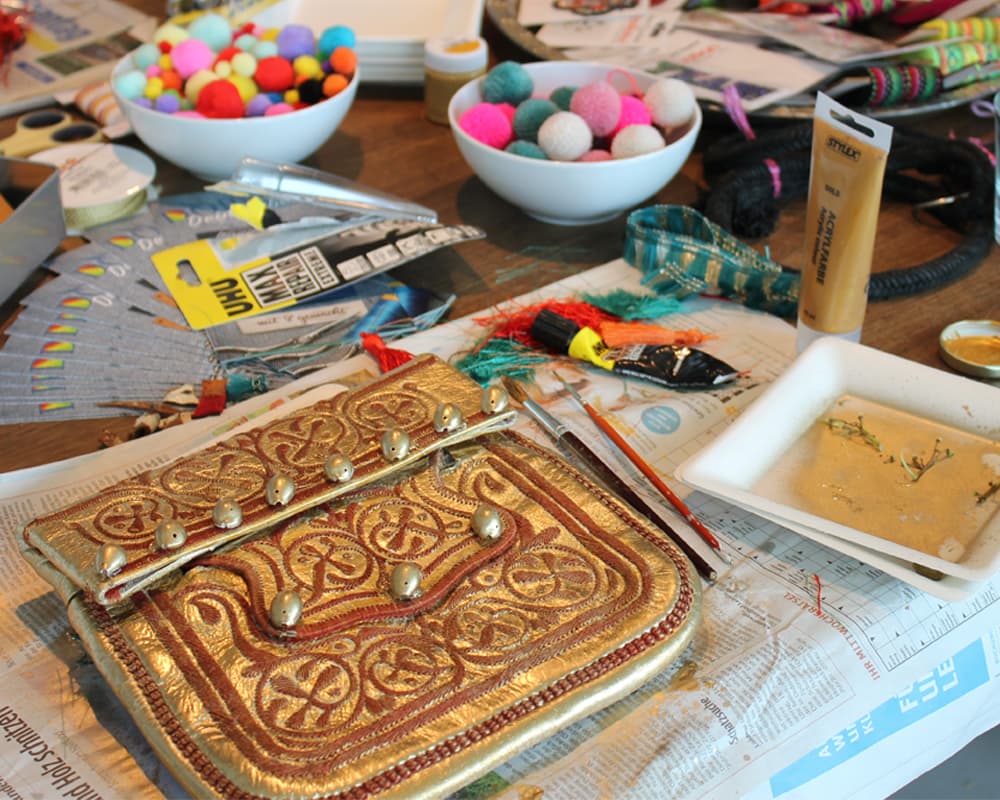When you close your eyes and think about palm trees I am sure images and feelings floating in your mind include summer, heat, the sun, walks along the beach, lying in a hammock, vacation, freedom… alright alright, we got the picture.
So, what if you could carry that feeling around? We love palm trees not just because of the beautiful associations in our minds. But also because they provide a valuable material used in the production of our ABURY raffia shoes.
The Palm Tree’s Treasure: Raffia Fibre
The ABURY raffia summer shoes are handmade from raffia fibre. This material is obtained from the raffia palm tree, which grows in various parts of Africa. This tree has spectacular leaves that can grow up to 18 meters long. In fact, this makes it the palm tree with the largest branches. In order to obtain the fibre artisans cut and tear the leaves to yield long continuous green fibre. This material has amazing qualities that make it ideal for weaving. It is soft yet strong, it is easy to bend, durable and biodegradable on top.
 © Photo via Wikimedia Commons
© Photo via Wikimedia Commons
 © Photo via Wikimedia Commons
© Photo via Wikimedia Commons
The Production Process of the Raffia Shoes
We collaborate with a small production company in Marrakech. The company is working with a group of skilled artisans, who have been culturally making raffia shoes for many years. To turn the raffia fibre into a shoe, there are various steps these artisans follow:
First of all, the design is made incorporating the ideas and visions of us, the production manager and the artisans themselves. They are given sketches, measurements, photos or artwork of the design and only after they have produced a sample approved by the production manager, the production of the entire order starts.
The raffia used in the production is naturally harvested and sourced in Madagascar. Before the weaving of the shoes artisans dye the raffia in drums using natural pigments from plants like indigo or jojoba. The natural dye does not break down the natural waxy feel of the raffia fibre so it remains strong. After the raffia has the desired colours, the artisans hang it up for the craftswomen who do the weaving.
To weave shoes in different sizes the women use plastic shoe lasts organised by shoe size. They use a large needle for the weaving, carefully following the photos or artwork to copy the design. While working on the basis of their traditional weaving techniques the women are very adaptive to combine their crafts knowledge with modern, innovative designs and new measurements.
 © Photo by Crystal Green
© Photo by Crystal Green
After the completion of the upper shoe, the product continues its journey to the leather artisans. They cut the leather skins in the respective size for the inner sole and large sheets of shoe foam to make the bottoms. By sewing and glueing the artisans assemble the sole, heels, finishes and interior paddings.
 © Photo by Crystal Green
© Photo by Crystal Green
 © Photo by Crystal Green
© Photo by Crystal Green
Lastly, all shoes go through a quality check up and only then embark on the journey from Marrakech to Berlin - to beautify the feet of palm tree loving fashionistas!
 © Photo by Suzana Holtgrave for ABUR
© Photo by Suzana Holtgrave for ABUR






Share: